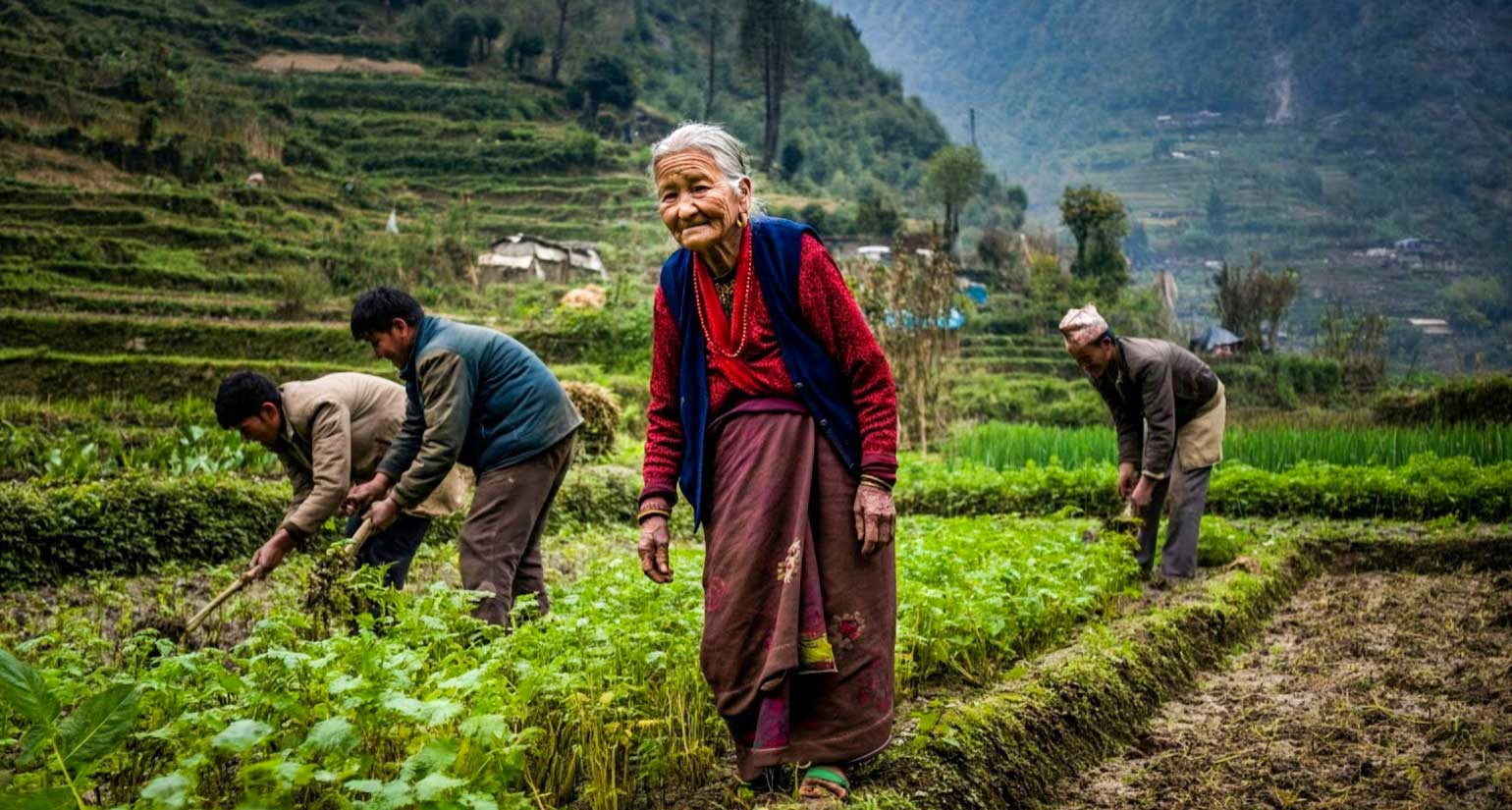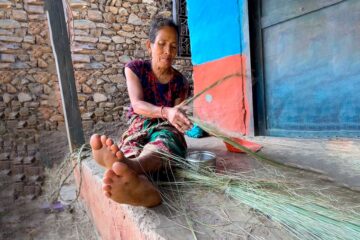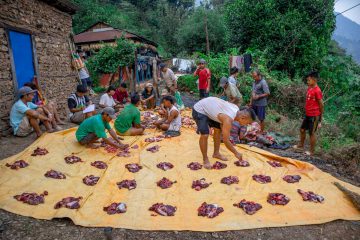As we have discussed in the previous article, people in the traditional remote villages preferred work for work which strengthened social bonds and a sense of shared responsibility in the community.
But in the case of helpless people who can’t go work for others but needed their work to be done, there is another system called Guhaar.
The meaning of Guhaar itself is “Help” in English.
In this Guhaar system, people willingly go to work for the family (or an individual) without expecting anything in return (unlike Parma where they expect work). But as a way to thank all the people who came to work, the family (or individual) usually offers good food like Dal-Bhat (Rice & Lentil) with Meat curry. Which is mostly home grown, like people raise chicken and goats, rice or maize (corn) dishes. Sometimes they also offer home brewed alcohol (raksi).
It’s neither mandatory nor has the specific food requirement. People offer what they can afford happily.
But who are helpless people?
Normally, villagers will consider people as helpless if they’re financially and physically weak, like
- If they’re elderly couple (without children) who can’t work on their own.
- Single person with disabilities.
- Single mother with a small child, etc.
What Does Guhaar System Tell About Our Traditional Communal Living?
the Guhaar system in traditional remote villages reveals several important aspects of the community:
- Strong sense of community and social solidarity: The willingness of villagers to assist those in need without expecting immediate reciprocation demonstrates a deep-rooted sense of community and social responsibility. This system exemplifies the principle of “from each according to their ability, to each according to their need,” highlighting a collective commitment to the well-being of all members.
- Emphasis on mutual aid and support: The Guhaar system provides a practical mechanism for providing essential assistance to vulnerable members of the community. It ensures that those who are unable to work due to age, disability, or other circumstances still receive the support they need to survive and thrive. This mutual aid system reinforces the interconnectedness of individuals within the community.
- Value of human dignity and compassion: By offering assistance without expecting immediate returns, the Guhaar system demonstrates a deep respect for human dignity and a compassionate understanding of the challenges faced by vulnerable individuals. It underscores the importance of collective action in addressing the needs of those in need.
- Importance of social cohesion and trust: The successful functioning of the Guhaar system relies on a high level of trust and social cohesion within the community. Villagers must trust that their assistance will be genuinely appreciated and that they will not be exploited. This trust is built upon shared values, strong social bonds, and a collective commitment to the well-being of all members.
- Resilience and adaptability: The Guhaar system demonstrates the resilience and adaptability of traditional communities. It provides a flexible and responsive mechanism for addressing unforeseen challenges and ensuring the well-being of all members, even in the face of limited resources and unpredictable circumstances.
Overall, the Guhaar system provides valuable insights into the social, cultural, and economic fabric of traditional remote villages. It highlights the importance of community, compassion, and mutual aid in fostering a just and equitable society.
This system is still in practice in traditional rural villages like Khasrang, Lamjung and many other remote regions but is on the verge of extinction like some any other systems, Parma and Molluwa/Bhaag.




